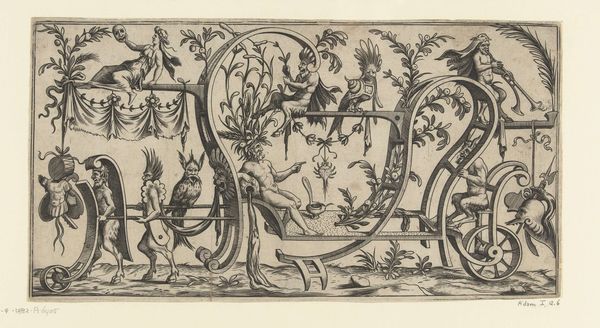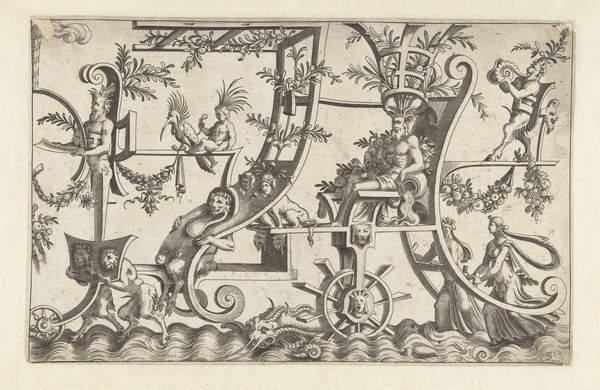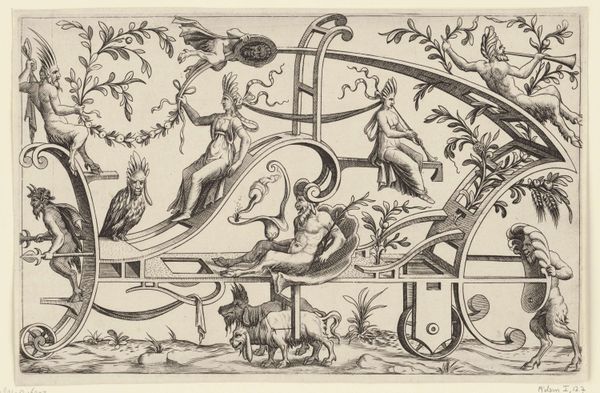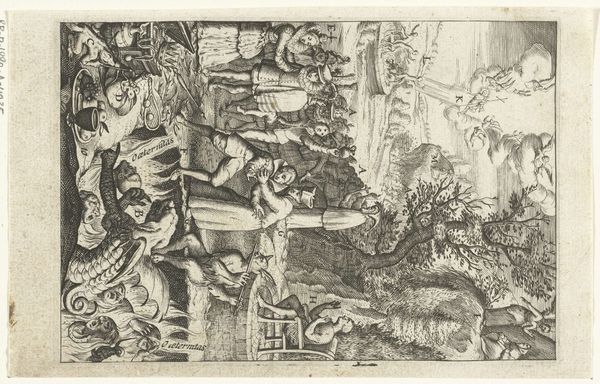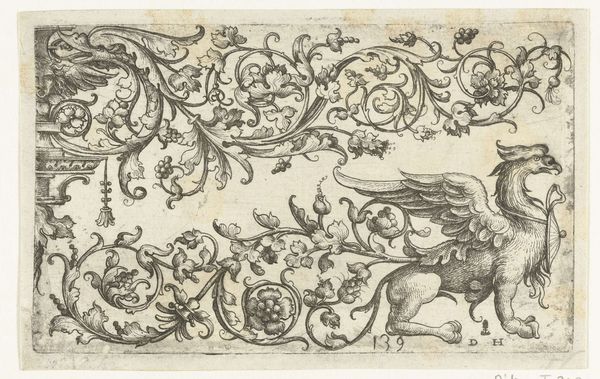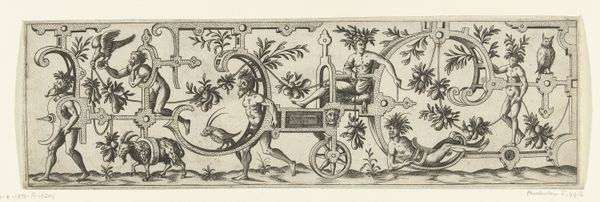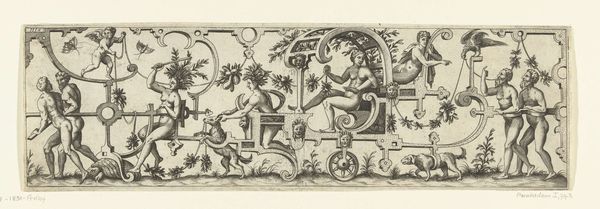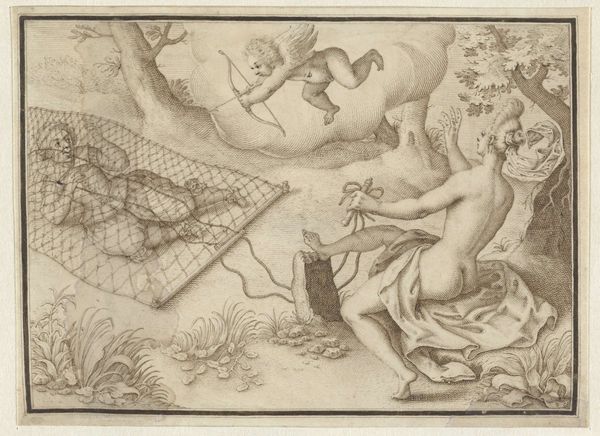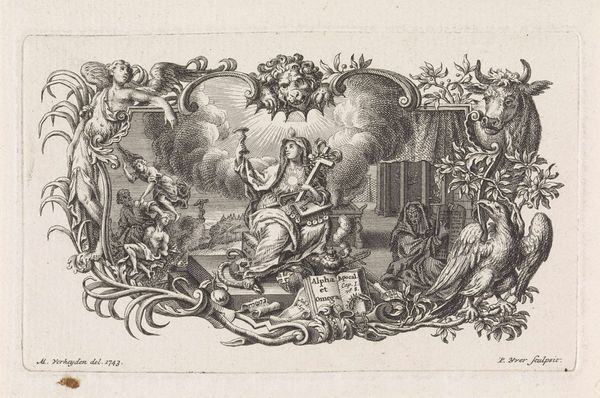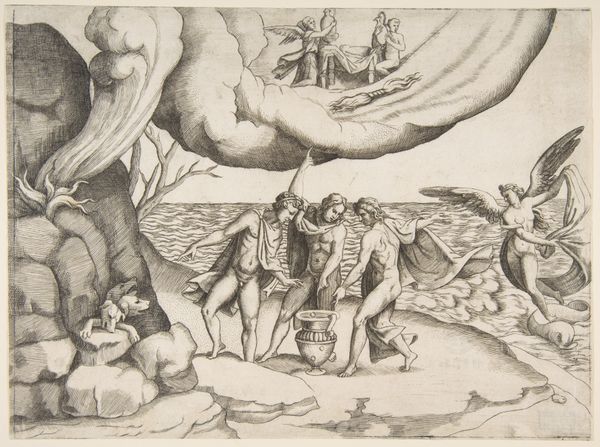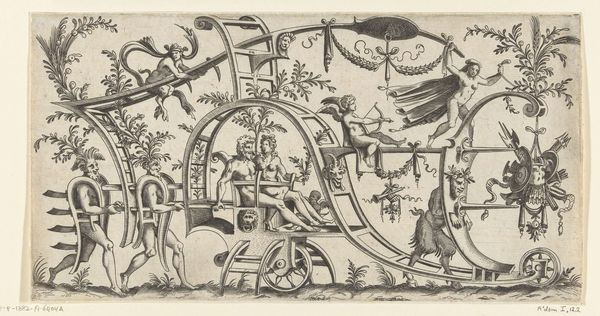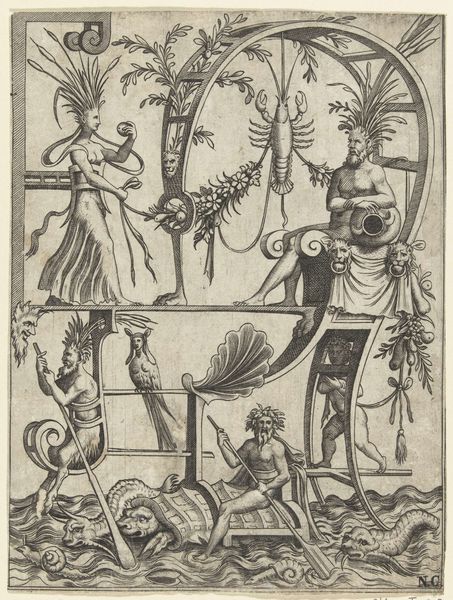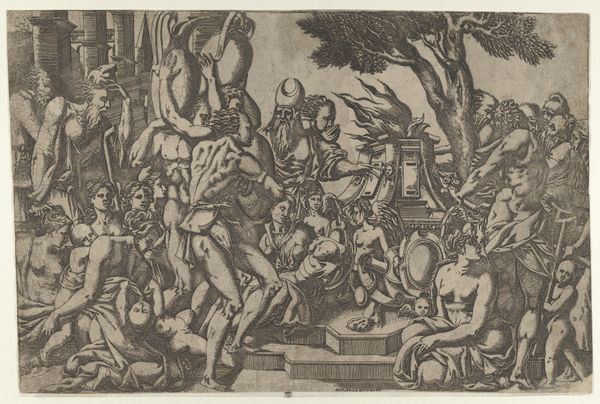
print, engraving
#
allegory
# print
#
mannerism
#
figuration
#
form
#
11_renaissance
#
geometric
#
line
#
history-painting
#
engraving
Dimensions: height 155 mm, width 260 mm
Copyright: Rijks Museum: Open Domain
Curator: This print, "Triomfwagen waarop vrouw met een luit," from 1550 is a fascinating example of Mannerist art. What catches your eye? Editor: It's so ornate! A woman with a lute on a triumphal chariot…it feels very celebratory, almost like a parade float. There's so much detail packed in. How do you interpret this work? Curator: Well, let's unpack it. Notice how the figures aren’t just decorative. They're placed deliberately. What kind of statement do you think is being made by having these figures, and the woman playing the lute, specifically, elevated in this triumph? Who are these images aimed towards, what ideas are circulating? Editor: Hmm, I guess putting the woman with the lute on top could be about celebrating the arts or perhaps even feminine artistry? Maybe it says something about the changing role of women, their increased access to education, for instance. Curator: Precisely! Consider the historical context: the rise of humanist thought during the Renaissance. This print likely speaks to a re-evaluation of women’s roles, associating them not just with domesticity, but also with intellectual and creative pursuits. The 'triumph' becomes a symbolic recognition of these contributions. The complex intertwining of classical motifs with music also highlights a cultural elite claiming ancestry of intellect, artistry and therefore authority through lineage. Editor: I never thought about it that way. So, it's not just a pretty image but also a reflection of the social and intellectual climate of the time, using allegory to advocate for a shift in gender roles? Curator: Exactly! This print, in its intricate way, opens a window into Renaissance society’s evolving ideas around gender, art, and power. Art is not created in a void. What seemed to simply depict ‘beauty’ holds far greater nuance and history. Editor: That's really insightful. I'll definitely look at art from that era differently now. Thanks!
Comments
No comments
Be the first to comment and join the conversation on the ultimate creative platform.
